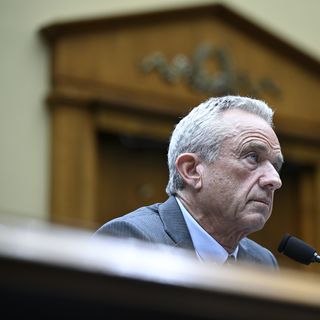Canva's cofounder says creatives are making a mistake by not embracing AI in their work

Canva
- Canva's cofounder said creatives should embrace AI, and it'd be foolish not to do so.
- Cliff Obrecht said designers are reacting to AI as they did to Canva in its early days.
- But Canva helped free designers' time for more "high-value work," he said.
Canva's cofounder and chief operating officer says it's foolish for creatives not to embrace AI.
Cliff Obrecht, who cofounded the design software company with his wife Melanie Perkins, said designers are reacting to AI like they did to Canva in its early days.
"So at Canva, when we launched, a lot of designers said, 'Canva, we hate you. You are ruining our industry. You are like letting everyone design,'" Obrecht said on a Tuesday podcast episode of Masters of Scale.
"And so over time, it didn't take long, within four years, designers didn't feel threatened by Canva," he said, adding that Canva's tools helped designers free up time for "high-value work."
He said he sees "AI as just another step in that evolution," and that it's time for creatives to embrace the new technology.
"Not embracing AI as a creative is, you can see where it's going. It seems folly," he said to the podcast's host, Bob Safian.
Canva first launched AI-powered tools in 2023, with its "Magic" branded tools, which assisted in copywriting and designing. In April, it launched its Visual Suite 2.0, which integrated tools for design, writing, coding, and data visualization.
This comes as creatives from various industries have raised concerns over the last few years about AI killing their jobs.
In 2023, Adobe employees slammed the company after it launched Firefly, an extensive suite of generative AI tools. Adobe employees, whose customer base consists of creatives, said the tool would kill the jobs of some of its customers.
There were also concerns that Adobe could use creators' content to train its AI models, something the company denied in a blog post in 2024.
The AI debate has reached Hollywood. In 2023, more than 11,000 Hollywood film and TV screenwriters went on strike to criticize the use of AI in the film industry and demand more regulation in the field.
However, Jeffrey Katzenberg, the cofounder of DreamWorks, said in an AI conference in December that top Hollywood showrunners and creators are embracing AI and seeing it as a useful resource to their creative processes.
In June, former Disney exec Kevin Mayer said in an Opening Bid podcast that AI could make video and storyline creation more efficient for creatives.
Representatives for Canva did not respond to a request for comment from Business Insider.



